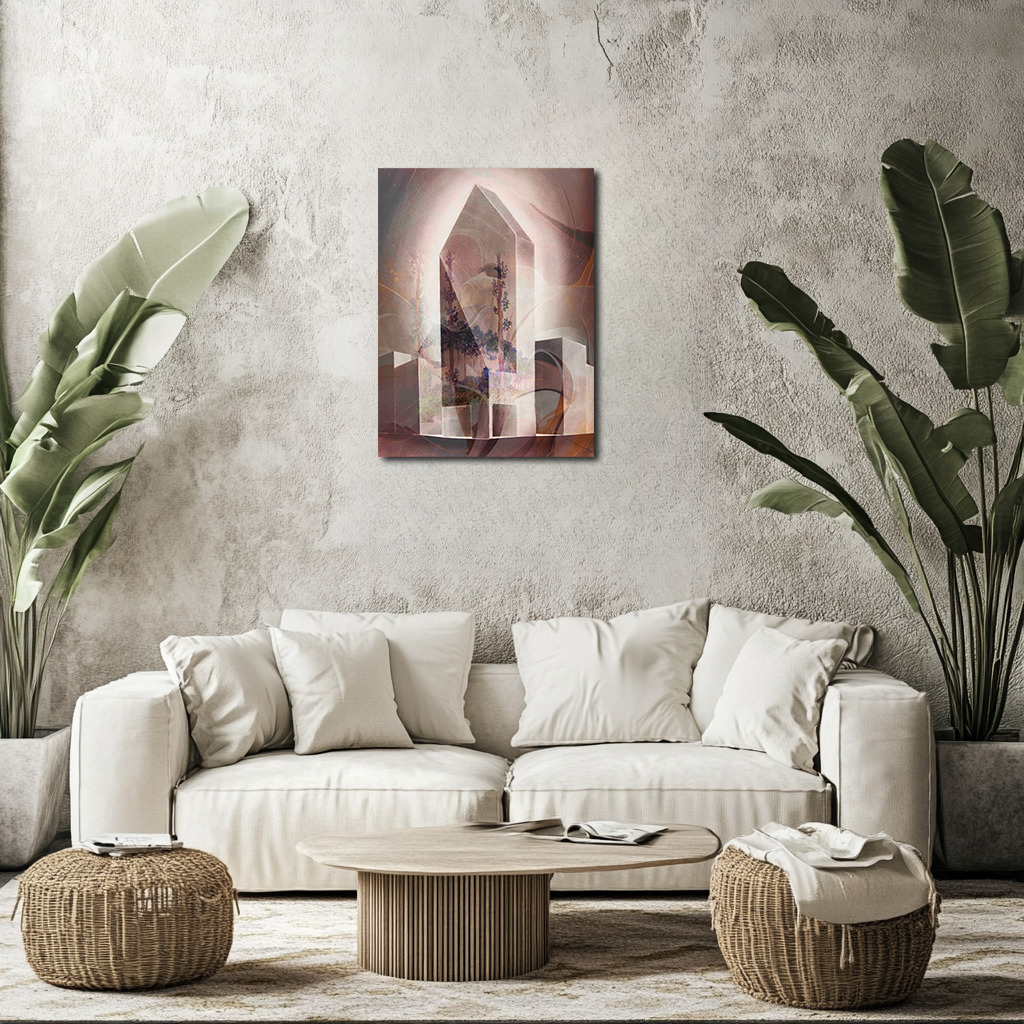Echoes of Silence: The Three Trees Within the Prism
This conceptual reinterpretation of Monet’s Three Trees in Grey Weather transforms a simple natural scene into a symbolic meditation on preservation and entrapment. The trees, once free beneath an overcast sky, are now encased within massive crystal prisms, caught between existence and isolation. The muted greys and soft blues of Monet’s original work remain trapped within the glass, while the world outside glows with metallic coldness, emphasizing the contrast between nature and artificiality. The prisms distort and refract the trees, questioning whether preservation is a form of remembrance or a form of loss. The artwork challenges the notion of permanence, inviting the viewer to reflect on the delicate balance between protecting nature and altering it beyond recognition.
Please see Below for Details…
Hotline Order:
Mon - Fri: 07AM - 06PM
404-872-4663
Claude Monet’s Three Trees in Grey Weather , originally painted in the late 19th century, depicted a quiet and melancholic landscape where nature stood still beneath an overcast sky. The painting captured the serenity of solitude, with three slender trees swaying against the soft greys and blues of the atmosphere. The composition was simple yet profound, embodying Monet’s ability to find emotion in the subtlest of moments.
In this conceptual symbolic reimagining, the trees are no longer bound by the earth but instead encased within towering crystal prisms, suspended between nature and the unknown. The organic strokes of Monet’s Impressionist touch now coexist with stark geometric monoliths, evoking a sense of entrapment and preservation. The trees, once breathing in the open air, are confined within towering translucent structures, as if memories of the past have been fossilized within the glass of time itself.
The composition suggests a paradox—the trees remain visible, yet inaccessible. They exist within the prism, untouched by the winds that once shaped them, protected yet disconnected from the world around them. These monolithic structures stand as monuments of history, symbols of how nature, when encased within the constructs of modernity, can become a relic rather than a living entity. The trees are not dead, but they no longer sway freely. This transformation speaks to the fragility of nature in a world increasingly defined by artificial boundaries, a commentary on humanity’s desire to preserve, even at the cost of separation from the natural order.
Color plays a vital role in this piece. The original muted greys of Monet’s landscape remain within the prism, as if time has been frozen in place. Outside, however, the palette shifts into metallic silvers, ethereal whites, and deep shadows, contrasting the warmth of the natural world with the cold permanence of the constructed one. The subtle glow of the prism adds an otherworldly presence, suggesting a force beyond human control. This interplay of colors heightens the contrast between past and present, nature and architecture, fragility and permanence.
The presence of the prisms also raises questions about perception. Are the trees being preserved for eternity, or have they been trapped, removed from the cycle of life? The reflection and refraction within the glass distort their shapes, bending them in ways that seem both beautiful and unsettling. This alteration suggests that even when nature is remembered, it is often reshaped by human interpretation, changed to fit the constructs of modernity.
As an artist, my vision was to explore the relationship between memory and transformation. Monet captured fleeting moments, painting with the awareness that light and color were in constant motion. This reinterpretation freezes that motion, transforming his Impressionist scene into a symbolic meditation on permanence. In doing so, it asks whether preservation is a form of protection or a form of loss. The trees remain, but they do not grow. Their existence is prolonged, yet their freedom is sacrificed.
This piece serves as a visual metaphor for how humanity interacts with nature. We seek to preserve beauty, yet in doing so, we often remove it from its original essence. The towering prisms suggest progress, advancement, and knowledge, but they also suggest confinement. The balance between reverence and control is delicate, and this artwork challenges the viewer to consider what is gained and what is lost when the organic is transformed into the artificial.
Add your review
Your email address will not be published. Required fields are marked *
Please login to write review!
Looks like there are no reviews yet.








